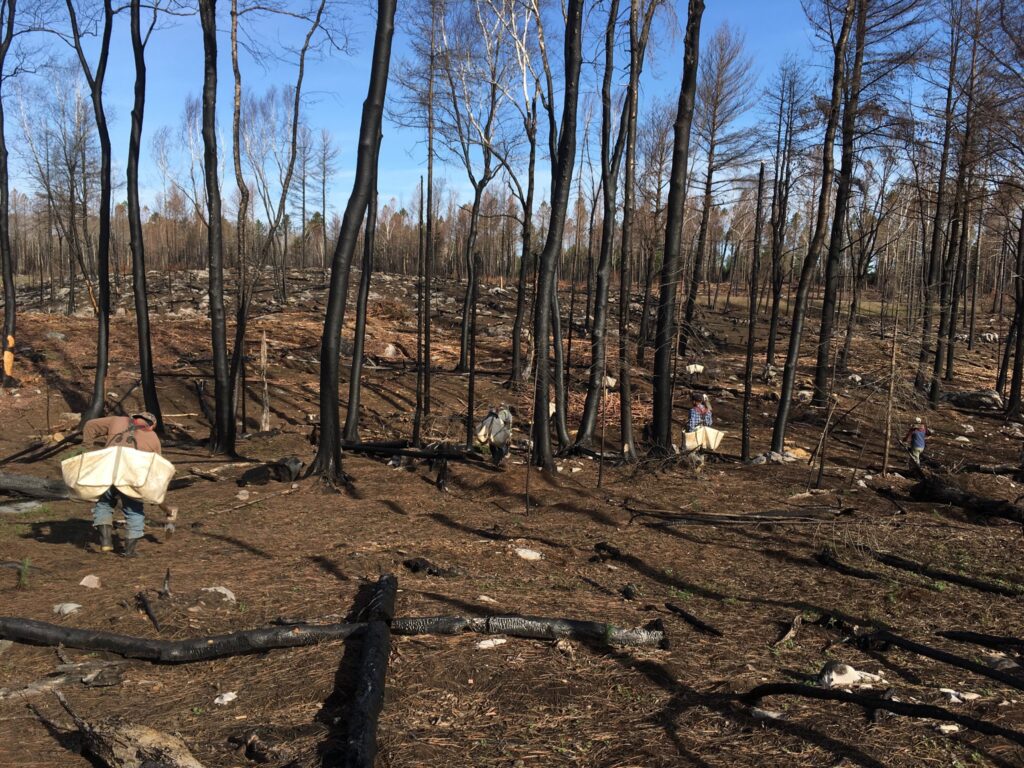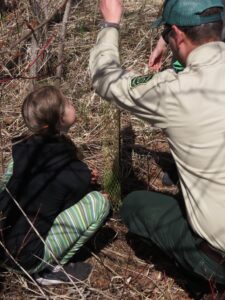
Public and private groups recently planted more than 100,000 trees in areas burned during last summer’s Greenwood Fire on the Superior National Forest. The blaze, which burned about 26,000 acres near Isabella, was the worst in several years.
This spring, contract crews working with The Nature Conservancy, Superior National Forest, Lake County and the Minnesota Department of Natural Resources put 129,000 seedlings in the ground. The trees are a mix of red and white pine, tamarack, white spruce and black spruce species, according to WTIP.
Notably, the seedlings all came from stock one growing zone south of the region in question, as part of an effort to make northern Minnesota’s forests more resilient to climate change. Genetics from the more southern forests should help the north woods adapt to warming weather and other climate trends.
“We’re seeing our forests stressed, and in a lot of places in pretty poor condition,” Jim Manolis, resilient forest program director for The Nature Conservancy, told MPR News.
Officials say the forest simply needs a little extra help recovering from the intense fire, and surviving a new normal. Foresters have found that many native tree species require assistance, while early successional species like aspen and willows easily grow back on their own.
“This is a lot of acres to just kind of hope for the seeds to reestablish itself,” DNR forester Anna Heruth told MPR News. “Also, because of the intensity of the fire, we don’t know how much seed is actually in that duff layer. It could have gotten burned up with the intensity. So we want it to ensure that seedlings will come back.”
The Greenwood Fire burned exceptionally intense in many areas, which experts say was partly a result of decades of fire suppression. Preventing earlier fires resulted in a dangerous and unnatural buildup of species like balsam fir, which burned hot during last summer’s drought.

The planting effort focused on areas where burned timber was harvested this spring as part of a special post-fire salvage sale, and around the North McDougal Lake Campground, which remains closed due to fire damage.
The Superior National Forest and the other partners will continue planting trees around the forest as part of a broad climate change resiliency effort, and monitor the success seen in the Greenwood Fire area, learning more about how to help the forests thrive.
More information:
- Replanting a resilient forest in the ashes of the Greenwood Fire – MPR News
- Tree planting brings fresh look to charred earth from 2021’s Greenwood Fire – WTIP
- A new forest takes root in a fire-scarred landscape in northern Minnesota – Star Tribune


